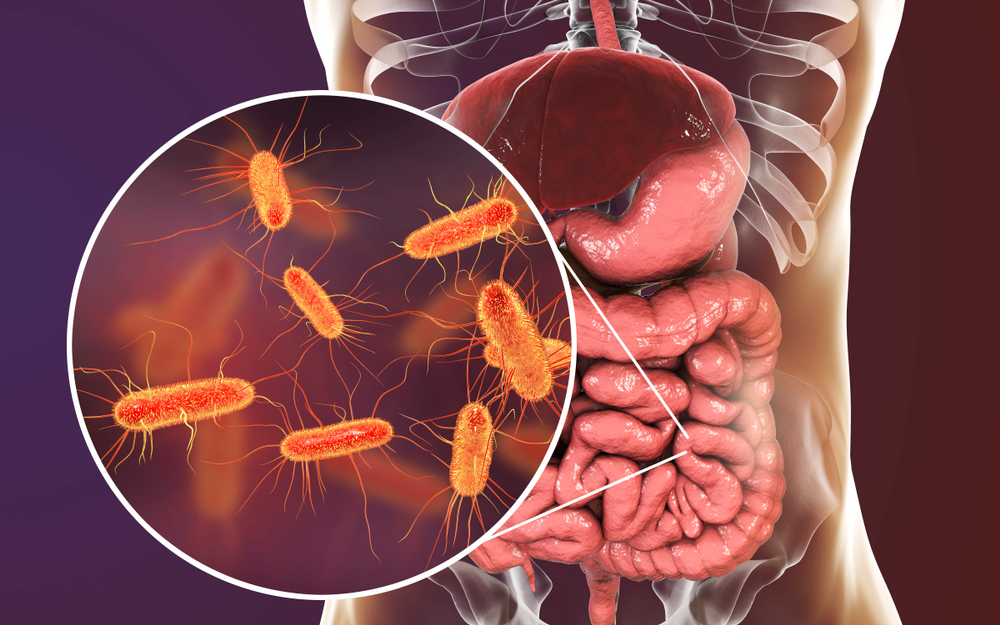Gut microbes are in constant communication with the rest of our body and they define how we digest food, perform everyday tasks and how we respond to stress. Recently, they have been in the limelight for their role in diseases outside of the gut. Our research has indicated the important role that gut bacteria may have in triggering and accelerating dementia pathology.
Alzheimer’s disease is the leading form of dementia (around 60–70% of dementia cases), mostly affecting elderly people, who are a valuable asset to any society. In Australia, the economic burden of dementia was $15 billion in 2018 and in 2021, it was estimated that 28 300 people were living with younger onset dementia (under the age of 65). According to Dementia Australia, there are 421 000 people living with dementia in 2024 and this number is expected to double by 2054, if there is not a major breakthrough in disease treatment.
The molecular pathology of dementia is complex, multifaceted and evolves with age; however, recent literature indicates that gut microbes can be a major but silent driving factor in controlling the onset and progression of this disease. The gut–brain axis is a bidirectional communication path between the gut and brain. Different biomolecules are exchanged between them, and these molecules perform many physiological functions, such as immune maturation of the brain and controlling digestive motility in the gut. However, different pathogenic bacteria in the gut may opportunistically send messages to the brain that code pathogenic triggers.

Pathogens + proteins = pathology
Pseudomonas aeruginosa and Escherichia coli are opportunistic gut pathogensthat colonise the gut and are usually kept under control by good/symbiotic bacteria. However, these pathogens generate certain proteins in their biofilms and, given the opportunity — for example in ulcers, exposure to enteric nervous system or gut dysbiosis — these bacteria can dispatch these proteins across the gut to the brain. Once in the brain, the proteins recruit partner proteins, specifically Amyloid-β, to initiate dementia pathology. We have seen this mechanism of disease progression in prion’s disease where prion particles can propagate from gut to brain and induce protein aggregation in the brain. Amyloid-β is a protein produced in the brain for a physiology still under investigation, but it aggregates to make fibrils and this process of fibril-making is toxic to the brain and has a key implication in dementia pathology.
The pivotal role of Amyloid-β in dementia is evolving and the major therapeutic efforts against dementia have resulted in monoclonal antibodies against Amyloid-β to specifically help the immune system to remove the aggregated form of this protein from the brain. Treatment with these antibodies has resulted in cognitive improvement at least in the early stages of dementia. Recently, Donanemab — a monoclonal antibody against an aggregated form of Amyloid-β — has been approved by the United States Food and Drug Association for the treatment of early Alzheimer’s disease.
Why Amyloid-β is produced in the first place?
There are questions for why Amyloid-β is produced in the brain if its existence can be toxic and lead to Alzheimer’s disease. Work from our team indicates a guarding role of this protein against microbial biofilms. This protein is potentially produced as a native defence strategy of the brain to shield against invading pathogens and their biofilm. We found that Amyloid-β has the ability to dissolve and destroy the biofilms made by infectious bacteria and expose those bacteria to anti-microbial compounds. A combination of antibiotics with Amyloid-β was very potent against microbial colonies when working in synergy, ie, amyloid-β dissolving the biofilms of microbial colonies and presenting the hidden microbes to antibiotics. Based on this discovery, we speculate that Amyloid-β is produced in the brain in response to microbial invasion or biofilms both at the local (central nervous system infections) or distal level (pathogenic colonisation of the gut with microbial biofilms). This is also based on the observation by other scientists that Amyloid-β is found in the gut tissue and colocalised with gut-pathogens in experimental models. An overproduction of Amyloid-β in response to infections or gut bacteria, beyond a level that the brain can manage, could lead to the development of Alzheimer’s disease.
A major limitation in the study of the development of Alzheimer’s disease is the lack of appropriate models. Scientists can test a drug in an isolated system such as tissue cultures or even a 3D culture system, but that provides limited information on only a single mechanism of the disease. In animal models, the disease is induced in an animal (rats or mice) by genetic modification. They can develop the symptoms but their native physiology and biochemistry are not designed for that particular disease process. For example, mice and rats do not develop Alzheimer’s disease as humans, but chimpanzees can. Scientists can introduce a gene for Amyloid-β in mice so they develop an aggregated form of this protein and then experience some cognitive decline in 2–3 months. These biological tools are different to a complex age-associated disease biochemistry that takes 20 to 30 years to develop in humans and then another 10 to 20 years to worsen. We are developing mini-brains in the petri dish that will closely resemble the human pathogenesis of Alzheimer’s disease and allow us to study the disease and effectiveness of therapeutic intervention in live space and time.
The future of dementia treatment
In summary, our knowledge of the role of the gut microbiome is evolving, and we are investigating those messages that pathogenic gut bacteria send to the brain to participate in dementia pathology and how these messages make their way from the gut to the brain. With this knowledge in hand, we would be better able to design therapeutic interventions that can treat the disease as well as keep the pathogenic bacteria in check inside the gut. Also, the future of therapies against age-associated complex diseases such as dementia is not in a single silver bullet. It will be a combination therapy to simultaneously target the disease at many fronts and gut bacteria could be an important one. However, once we have these answers, they will be recapitulated to design interventions for better aging and therapies for neurodegenerative diseases such as Alzheimer’s and Parkinson’s diseases.
Dr Ibrahim Javed is a laboratory head and research leader at Clinical and Health Sciences, University of South Australia, Adelaide and leads a team of researchers to explore the gut–brain axis in the context of dementia onset and progression. His team is also open to collaboration and discussion with dementia carers and medical practitioners in this field.
The statements or opinions expressed in this article reflect the views of the authors and do not necessarily represent the official policy of the AMA, the MJA or InSight+ unless so stated.
Subscribe to the free InSight+ weekly newsletter here. It is available to all readers, not just registered medical practitioners.
If you would like to submit an article for consideration, send a Word version to mjainsight-editor@ampco.com.au.

 more_vert
more_vert